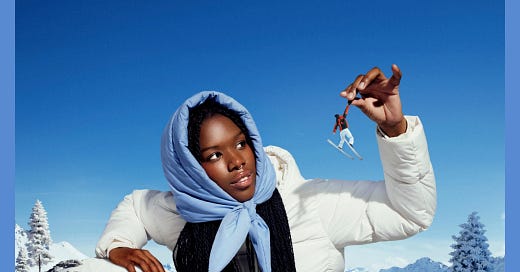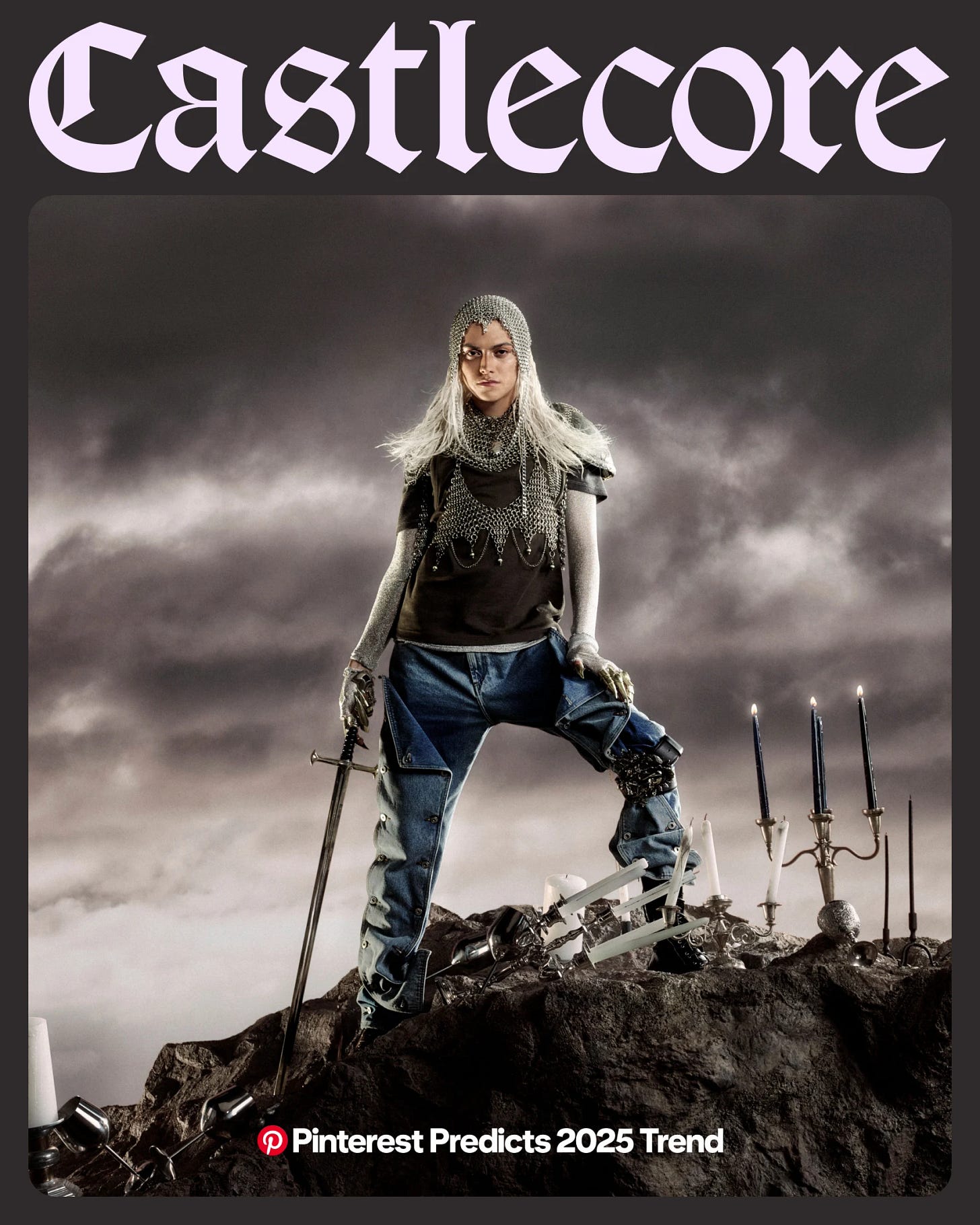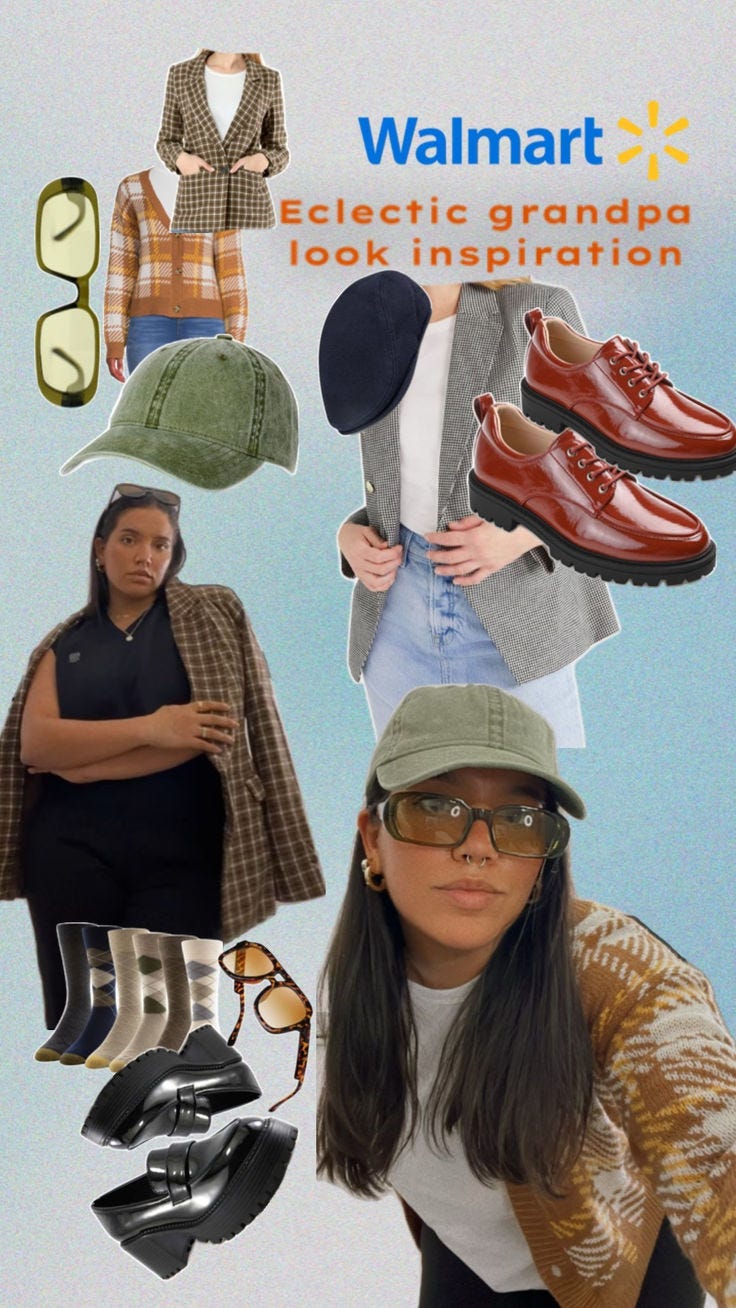Who Really Creates Trends? (Pinterest Predicts is here)
Is Pinterest Predicts a self-fulfilling prophecy? The drop is here—and so are my thoughts :)
I got an early look at Pinterest Predicts 2025 (perks of the job!), which gave me time to really think about what’s happening beneath the surface of trend forecasting.
I’ve been experiencing one of these trends firsthand—“Peak Travel” will apparently be huge in 2025, and I just spent a few days in Park City, Utah for a marketing leadership offsite—guess you could say we’re ahead of the curve. 🏔️ The early snow and mountain air got me thinking about how trends move from prediction to reality... and how major brands are playing an increasingly active role in making that happen.
You’re here because you recently subscribed or signed up for one of my resources—my course waitlist on Maven, lightning lesson, or Notion templates.
If someone sent you this post and you’re not subscribed, join those people learning how to tactically advocate for brand at your company. 📬
Pinterest Predicts 2025 just dropped, and I can’t stop thinking about something fascinating happening beneath the surface. While everyone else is busy parsing which aesthetics will be hot next year (hello, “Cherry Coded” everything 🍒), I’m more interested in how Pinterest and their brand partners are actively turning predictions into reality.
This isn’t just another trend report (I’ve deleted about 45 emails about benchmark reports in just the past week 😛). With the drop, Pinterest is launching over 20 exclusive products and experiences with major brands to manifest these predictions into the real world. It raises an interesting question: Are they predicting trends, or creating them?
First, some context: Pinterest’s predictions carry serious weight. Over half a billion people use Pinterest monthly to discover and shop. Their annual predictions have proven 80% accurate over five years. And notably, trends on Pinterest last nearly twice as long as trends elsewhere on the internet (source).
But what really catches my attention is how Pinterest is evolving from trend predictor to trend accelerator. They’ve recruited a whole roster of brands to co-create these trends: Marriott Bonvoy, Meta, Urban Outfitters, and Wayfair are a few who have gotten in early on these “trend drops.” These aren’t just sponsorship deals; they’re calculated bets on cultural shifts.
The two lives of every trend
When we talk about trends, there are really two levels of interpretation at play:
The Direct/Literal: The aesthetic manifestation—what it looks like, sounds like, feels like. This is where most brands start and stop their analysis.
The Indirect/Strategic: What the trend signals about shifting consumer behaviors, values, and decision-making patterns. This is the most interesting!!
Once you’ve scrolled through them all, let’s look at some examples from Pinterest’s 2025 predictions:
“Peak Travel”
Direct: Mountain destinations over cities, alpine aesthetics, outdoor gear
Strategic: Growing desire for immersive experiences away from digital distractions, shift toward unique environments over conventional settings, changing expectations around corporate retreats and offsite planning
“Nesting Parties”
Direct: Baby shower alternatives focused on practical preparation
Strategic: Increasing focus on utility in social experiences, opportunity for service-based businesses, growing market for organizational tools (hey Notion 👋)
“Dolled Up”
Direct: Turning everyday life into a dollhouse aesthetic
Strategic: Growing comfort with playful choices in professional contexts, evolution in what’s considered “corporate,” shift in how younger decision-makers evaluate partnerships
How brands are manifesting these predictions
Some brand interpretations are genuinely smart:
Urban Outfitters is bringing “Dolled Up” to life through in-store installations in NYC, LA, and Miami. Rather than just stocking themed merchandise, they’re creating immersive retail experiences that better align with how Gen Z actually shops.
Marriott Bonvoy isn’t just waiting to see if mountain destinations trend—they’re actively creating desire through a “Peak Travel Concierge” experience in NYC. Smart way to generate FOMO while gathering real-time consumer insights.
But not every interpretation lands.
Take Meta’s interpretation of “Castlecore,” creating a medieval-themed Quest 3S headset (and the merch is literally a “custom Castlecore chainmail piece.” Are people asking for this?). While technically aligned with the trend’s aesthetics, to me it misses the deeper signal about consumers seeking tangible, authentic experiences. Sometimes literal interpretations can feel forced, especially when they don’t align with the brand’s core strengths or audience expectations.
Some brands seem to be jumping on trends without considering whether they should. As I wrote about in “The How & Whyyy of Unhinged Marketing,” not every cultural moment needs your brand’s take on it.
The strategy behind trend adoption
I caught up with Stacy Malone, Pinterest’s VP of Global Business Marketing, who shared an interesting perspective on timing: “The sooner a brand invests in a trend on Pinterest, the more time and opportunities they have to tap into these ahead of competition.” She emphasized how “you can definitely be too late to a trend. It takes resources to activate against a trend and if you do this too late, you may end up with the reverse, hurting the cultural relevance of your brand.”
This gets at something important: Trend adoption is a lot more about interpretation than it is about timing.
A framework for trend evaluation
Before your brand jumps on any trend, ask these questions:
What does this trend tell us about shifting customer mindsets? Look beyond the aesthetic manifestation to understand the underlying behavioral shifts.
For B2B brands especially, trends like “Peak Travel” might inform how you think about customer experience design or event planning rather than direct product features.
“Mix & Maximalist” signals rejection of minimalism in favor of bold expression—could influence everything from UX design (goodbye flat design?) to how B2B brands think about their visual identity.
What are the implications for how our customers’ businesses might change? If you’re B2B and selling to other businesses, consider how consumer trends will affect their operations.
The rise of “Nesting Parties” = opportunities for planning tools, organizational products, and service-oriented businesses.
“Player One” (avatar customization) signals increasing importance of digital identity, which has implications for how businesses manage online presence and virtual interactions.
How will this influence decision-making patterns? Trends like “Dolled Up” reveal growing comfort with personality-driven choices even in professional contexts. This could signal shifts in how younger decision-makers evaluate B2B partnerships.
“Aura Beauty” (makeup based on personal energy) reveals growing acceptance of personal expression, and that could influence how younger buyers evaluate vendor authenticity and brand personality.
“Cherry Coded” gets at how single motifs can span multiple contexts, building on the idea that that younger decision-makers are more receptive to brands that maintain consistent identity across traditionally separate spheres (professional/personal).
The Pinterest Predicts feedback loop
What makes Pinterest’s approach particularly interesting is how it creates a self-reinforcing cycle:
Pinterest identifies emerging signals in search data
They package these signals into predicted trends
Brand partners create products and experiences around these predictions
These launches generate visibility and influence consumer behavior
Consumer adoption validates the original prediction
The cycle continues, with trends lasting longer on Pinterest than other platforms
As Stacy points out, “Pinterest Predicts works for trendspotting by leveraging a machine-learning backed methodology that’s powered by how our audience uses Pinterest.” She notes that it works because Pinterest is a planning platform. “Trends are identified by deeply analyzing the unique search patterns of over half a billion monthly active users who plan what’s next for them.”
The future of trend creation
What we’re seeing is a shift from passive trend prediction to active trend acceleration. When Pinterest’s predictions (again, historically 80% accurate) get backed by major brands’ marketing budgets and distribution channels, they become almost impossible not to manifest.
Think about it: When Walmart sponsors the “Eclectic Grandpa” trend and adds co-branded trend badges to campaign creative, they’re not just riding a wave—they’re creating the wave (a little cerulean moment for you).
What should you do with 2025’s Pinterest Predicts?
My take, for brand operators:
Don’t take trends too literally—see if you can extract the strategic insights that matter for your audience and the “why” behind emerging trends
Consider both immediate application (opportunistic trend adoption) and longer-term brand building, and how trends might influence your entire business, not just marketing
Build frameworks for evaluating trends against your brand strategy and business goals
Trends are inputs, not mandates!
The art isn’t in spotting trends—platforms like Pinterest are doing that heavy lifting. The art is in interpretation: knowing which trends matter for your brand, why they matter, and how to translate them into meaningful experiences for your audience.
As trends themselves evolve faster than ever, the ability to evaluate and act on them strategically becomes the key differentiator. It’s not about being first to every trend, but about being thoughtful in which ones you choose to manifest. 🔮
Thanks for reading.
What was your fave prediction? (Mine was either pickle fix or chaos cakes.) If you liked what you read, consider:
saying hi or dropping a question in the comments!
connecting with me on LinkedIn: 👩🏼💻 Kira Klaas
sending to a friend 💌 or coworker 💬









I have been pondering over this very thing, and how it impacts our ability to be truly original. If I’m going to Pinterest to search for inspiration, chances are what I’m looking for is either already happening, or I’m looking for a very specific reference for one reason or other. I’d love to see their data around who gets to be a Pinterest tastemaker, and who doesn’t. We’ve even lost an ability to label things ‘basic’, because the technology behind the surfacing of these aesthetic choices means that there is always an entire world of inspiration, associated product, and a community of other people *just like you* affirming your way of looking at the world. I’d argue, from reading your take, a ‘trend’ in the Pinterest Predicts sense is just the search with enough backing from brand partnerships to make it worthwhile talking about.
your angle is incredible and I am in awe of your writing style. subscriber gained! such an interesting yet entertaining piece.